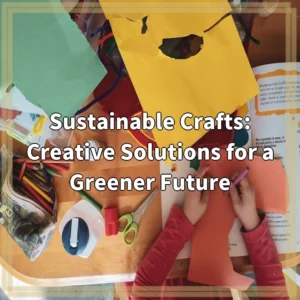What it is:
Camping is a beloved outdoor activity that allows individuals to connect with nature and escape the hustle and bustle of daily life. However, the production and use of traditional camping gear often have negative environmental impacts. Fortunately, there have been significant advancements in eco-friendly camping gear, offering a sustainable alternative for outdoor enthusiasts.
Real-World Problems:
1. Pollution: Traditional camping gear, such as tents, sleeping bags, and cooking equipment, are often made from synthetic materials that can release harmful chemicals during production or disposal. These chemicals can end up in the soil and water, contributing to pollution.
2. Waste Generation: Many camping items are designed for single-use or have a limited lifespan. This leads to a significant amount of waste being generated, as these items are often discarded after one or a few uses. With the increasing popularity of camping, this has resulted in a troubling accumulation of camping gear in landfills.
3. Resource Depletion: The production of traditional camping gear relies heavily on non-renewable resources such as petroleum-based plastics and metals. Extracting and processing these resources contribute to environmental degradation and can lead to resource depletion.
4. Carbon Footprint: The transportation of camping gear, especially if it is manufactured overseas, can result in a substantial carbon footprint due to long-distance shipping. Additionally, the energy-intensive manufacturing processes of conventional camping gear also contribute to greenhouse gas emissions.
By understanding these real-world problems associated with traditional camping gear, we can now explore the eco-friendly advancements that are challenging these issues and paving the way for a more sustainable camping experience.

Solutions:
1. Sustainable Materials: Eco-friendly camping gear utilizes materials that are less harmful to the environment. This includes using organic or recycled fabrics for tents and sleeping bags, as well as biodegradable or compostable materials for disposable items like plates and utensils.
2. Lifespan and Durability:
Eco-friendly camping gear is designed to be durable and long-lasting, reducing the need for frequent replacements. By investing in quality gear, campers can minimize waste generation and contribute to a more sustainable outdoor experience.
3. Minimalist Design:
Many eco-friendly camping gear brands focus on minimalist designs that prioritize functionality and versatility. This encourages campers to own fewer items, reducing overall consumption and waste.
4. Renewable Energy:
Camping gear manufacturers are incorporating renewable energy solutions into their products. For example, portable solar panels can provide clean and sustainable power for charging devices or lighting up campsites.
5. Responsible Production:
Eco-friendly camping gear companies are striving to reduce their environmental impact throughout the entire production process. This includes implementing sustainable manufacturing practices, reducing water and energy consumption, and promoting fair labor standards.
6. Education and Awareness:
Raising awareness about the environmental impact of camping gear and the availability of eco-friendly alternatives is essential. By providing information and education, individuals can make more informed choices and support sustainable camping practices.
By embracing these solutions, campers can contribute to a more sustainable outdoor experience, reducing their ecological footprint and preserving the natural beauty of the environments they explore.













